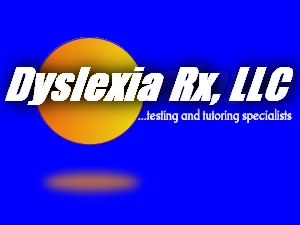Tutoring
Research-Based Best Practices
We use an Orton-Gillingham based method for teaching reading & spelling.
This is the research-based approach recommended by the
International Dyslexia Association.
Math and Writing instruction are also available.
 |
7523 S Rosemary Circle Centennial, CO 80112 (303) 741-9246 |
 |
Once your child has been diagnosed with dyslexia, one of the
MOST IMPORTANT
tasks you face is getting your child the
right type of tutoring.
This information can be used to evaluate both private tutors and offerings of help from the school system.
1) Children with dyslexia must be taught using an Orton-Gillingham-based program.
This methodology differs in what is taught and how it is taught. Its specific sequence minimizes the need for memorization. It is a phonics system that is simultaneously multi-sensory, structured, explicit, and systematic. It's designed specifically for children with dyslexia.
There are several versions of Orton-Gillingham (O-G) systems, each designed for a different educational setting. Any of them will work as long as it is an Orton-Gillingham system.
2) The tutor must be trained to properly teach an Orton-Gillingham method.
The ideal situation is to find a tutor who is certified in an O-G method. This means that the founder of that system has reviewed the knowledge of the tutor and guarantees that they know how to use their system properly.
Because each piece of an O-G system is there for a specific reason and each segment builds upon a previous skill having been mastered, there is danger in a tutor picking and choosing from several different systems to make their own mixture of teachings. They will most likely leave out some critical steps.
The 2nd best situation, if a certified tutor cannot be found, is to get a tutor that is well trained. Most of the O-G systems have an official training method. Many use certified trainers. If a tutor has received official training, there is a greater chance that they will use the system correctly. There are some tutors who have been trained by unofficial methods or by another tutor who was trained by someone else. There can be a loss of information as incomplete concepts are transferred from one person to another.
The 3rd best situation is if the tutor has a long track record of success and can give a list of references of students that have had significant improvement that has lasted the test of time.
3) The instructor must present the material at exactly the right pace for the student.
Since each concept builds upon the last, mastery of each concept is required. If the concept is not yet mastered, additional instruction time is needed until it is mastered.
One-on-one tutoring in a quiet setting is ideal for this type of pacing. It is the fastest way to close the gap between what your student needs to know and where they are now.
Some O-G systems are designed to teach more than one student at a time. Be aware that the instructor must still deal with this same pacing problem. The tutor can go no faster than the slowest student. If a student is absent, the others must mark time until the missing student is again brought up to speed with the others. In a class of 3, each student gets one third of the teacher's individualized attention. None of the current O-G systems are recommended to teach classes of more than 12 students.
4) Each student must receive instruction a minimum of twice a week for at least 45 minutes each session.
Once a week is not enough for new skills to “stick” and less than 45 minutes per session doesn't allow for the intense practice that is needed to make the concept automatic.More frequent tutor sessions will result in faster student progress. It is a matter of how much of your resources you can bring to bear on this problem.
Tutoring is hard work for our dyslexic students. Few of them can put forth the sustained effort needed for more than an hour a day. Longer sessions are not effective.
Contact Us
 About Us
About Us  Testing Process
Testing Process